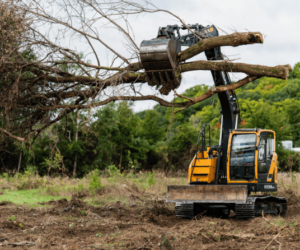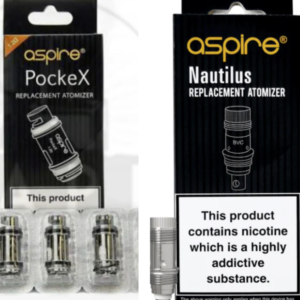The Ultimate Guide to Starting a Career in Phlebotomy
If you’ve ever had a blood test at the doctor’s office, you’ve already met a phlebotomist. These are the trained professionals who draw blood for medical tests, donations, or research. It might look simple, but this job needs the right skills, precision, and most importantly, proper phlebotomy training.
In this blog, we’ll walk you through what phlebotomy courses cover, why antecubital fossa veins are so important, and how you can begin your journey toward becoming a skilled phlebotomist.
What Is Phlebotomy?
Phlebotomy is the process of drawing blood from a person’s vein. The blood is usually sent to a lab for testing or used for transfusions or donations. While it might seem like a small part of healthcare, it plays a big role in diagnosing and treating diseases.
People who are trained in phlebotomy are called phlebotomists. They work in hospitals, clinics, blood banks, and labs. Their main job is to make sure blood is collected safely and accurately.
Why Choose a Career in Phlebotomy?
Phlebotomy is a great career choice if you enjoy helping others and are interested in healthcare. Here are some reasons why people choose this path:
- Fast training: You don’t need years in college. Most phlebotomy courses can be completed in a few months.
- High demand: Medical facilities always need phlebotomists. There are job opportunities everywhere.
- Great starting point: It’s a good way to enter the medical field and gain experience.
What You’ll Learn in a Phlebotomy Course
To become a successful phlebotomist, you need both classroom learning and hands-on practice. A solid phlebotomy training program teaches you more than just how to draw blood.
Topics Covered:
- Human anatomy and physiology: You’ll learn about the circulatory system and the veins you’ll be working with.
- Medical terminology: It’s important to understand the words doctors and nurses use.
- Infection control: Safety is key when dealing with blood and needles.
- Patient care: You’ll learn how to talk to patients, calm their nerves, and make the experience as comfortable as possible.
- Needle techniques and equipment handling: From choosing the right needle to labeling tubes correctly.
One of the most important things you’ll study is how to find and use the antecubital fossa veins—these are the veins located in the bend of your elbow. These veins are the top choice for blood draws because they are large and close to the surface.
Understanding Antecubital Fossa Veins
The antecubital fossa veins include three main veins:
- Median cubital vein
- Cephalic vein
- Basilic vein
These veins are popular for blood collection because they are:
- Easy to locate
- Usually large enough for needles
- Less painful for patients when accessed correctly
During your phlebotomy training, you’ll practice locating these veins on real people and mannequins until you become confident and accurate.
What Makes a Good Phlebotomist?
Being a phlebotomist is about more than just drawing blood. You need to be:
- Careful and precise: Accuracy is critical when dealing with blood samples.
- Good with people: Many patients feel nervous or scared. A friendly smile can make a big difference.
- Calm under pressure: Sometimes things don’t go as planned, and you have to stay cool and collected.
- Detail-oriented: Proper labeling and handling of samples can affect a person’s diagnosis.
These qualities are just as important as technical skills, and many phlebotomy courses include soft-skill training to help you succeed.
How to Get Started
If you’re ready to start your journey, here’s how to begin:
1. Find a Trusted Training Program
Look for a phlebotomy training program that’s approved by health authorities in your country or state. It should include both classroom hours and practical experience.
One example is Centauri World, which offers professional healthcare training programs, including phlebotomy. Their focus on real-world skills and certified instructors makes them a top choice for beginners.
2. Complete the Course
Courses usually take between 4 to 12 weeks, depending on whether you go full-time or part-time. You’ll spend time learning in the classroom and then get real experience in labs or clinics.
3. Pass the Certification Exam
After completing your course, you may need to pass a national certification exam, depending on your location. Once you pass, you’re officially a certified phlebotomist.
4. Apply for Jobs
With your certification in hand, you can start applying for jobs at hospitals, labs, clinics, or blood donation centers. Entry-level positions usually pay well and offer benefits.
Tips for Succeeding in Phlebotomy Training
- Practice often: Drawing blood takes skill. The more you practice, the better you’ll get.
- Ask questions: Don’t be shy—your instructors are there to help you.
- Stay organized: Keeping track of your tools and labels is important.
- Study anatomy: Knowing where to find veins, especially the antecubital fossa veins, will help you succeed.
Final Thoughts
Phlebotomy is a rewarding career that lets you make a real difference in people’s lives. With the right phlebotomy training, you’ll gain the skills to do the job well and the confidence to do it with care. Learning how to work with antecubital fossa veins and other important techniques prepares you to enter the healthcare world with a strong foundation.
Whether you’re fresh out of high school or looking to switch careers, phlebotomy courses are a smart and affordable way to step into the medical field. With trusted programs like Centauri World, you can get started on a path that’s not only in demand but also deeply meaningful.













